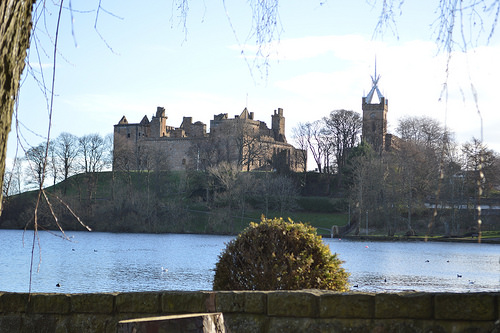Linlithgow
Perhaps most famous as the birthplace of the infamous Mary Queen of Scotts, there is much more to the town of Linlithgow than just the palace where she was born. Of course the palace is the largest of the town’s attractions which lies at the halfway point between the city of Edinburgh and Falkirk. The palace ruin is located along the side of the loch and dates from the fifteenth century. There is something about the ruins that makes you want to explore and learn more about this wonderful place. More can be learned by discovering the Linlithgow Story and by taking a boat trip out onto the loch you can indulge in some truly stunning views of the area. Sticking with the theme of water, a trip along the Union Canal is also a popular activity for visitors.

Things to See and Do
The Linlithgow Canal Centre is a popular attraction. Take a cruise aboard the St Magdalene and travel over the stunning Avon Aqueduct; the cruise lasts for two and a half hours and in the perfect way to relax and take in the wonderful landscape. This is the only canal museum in the whole of Scotland; it offers free admission and details the importance of the canals in the history of the town. For more town history pay a visit to The Linlithgow Story and discover more about the town’s connection with the powerful Stewart dynasty. Discover how people used to live and how they earned a living. Muiravonside Country Park is a wonderful place to visit; the gardens have been beautifully restored and offer a peaceful haven away from the busy high street. The views from the upper terrace are wonderful, taking in the palace, the loch and ancient St Michael’s Church. There are more than 170 acres of parkland, woodland and gardens to explore.
Places to Visit
No visit to Linlithgow would be complete without a visit to the palace. This stunning royal palace is set within its own beautiful gardens and parkland beside Linlithgow Loch. This was once one of the favourite residences of the kings and queens of Scotland, dating back as far as James I. It is still possible to see where alterations and additions have been made to the building by succeeding monarchs, with the chapel and the great hall being particularly impressive. As well as Mary Queen of Scotts, King James V was also born within these walls. This region is also home to one of the most important sites of prehistoric life on the Scottish mainland. Cairnpapple was once used as a burial site and also an important ceremonial site over 5,000 years ago. From the top of the hill here, the views extend to the majority of the eastern side of central Scotland. The site of St Michael’s Church was consecrated in 1242, and built upon the site of an even earlier religious building. The building you see today dates in most part to the 15th century. The church is located close to the palace and shares an equally interesting history with the House of Stewart.


